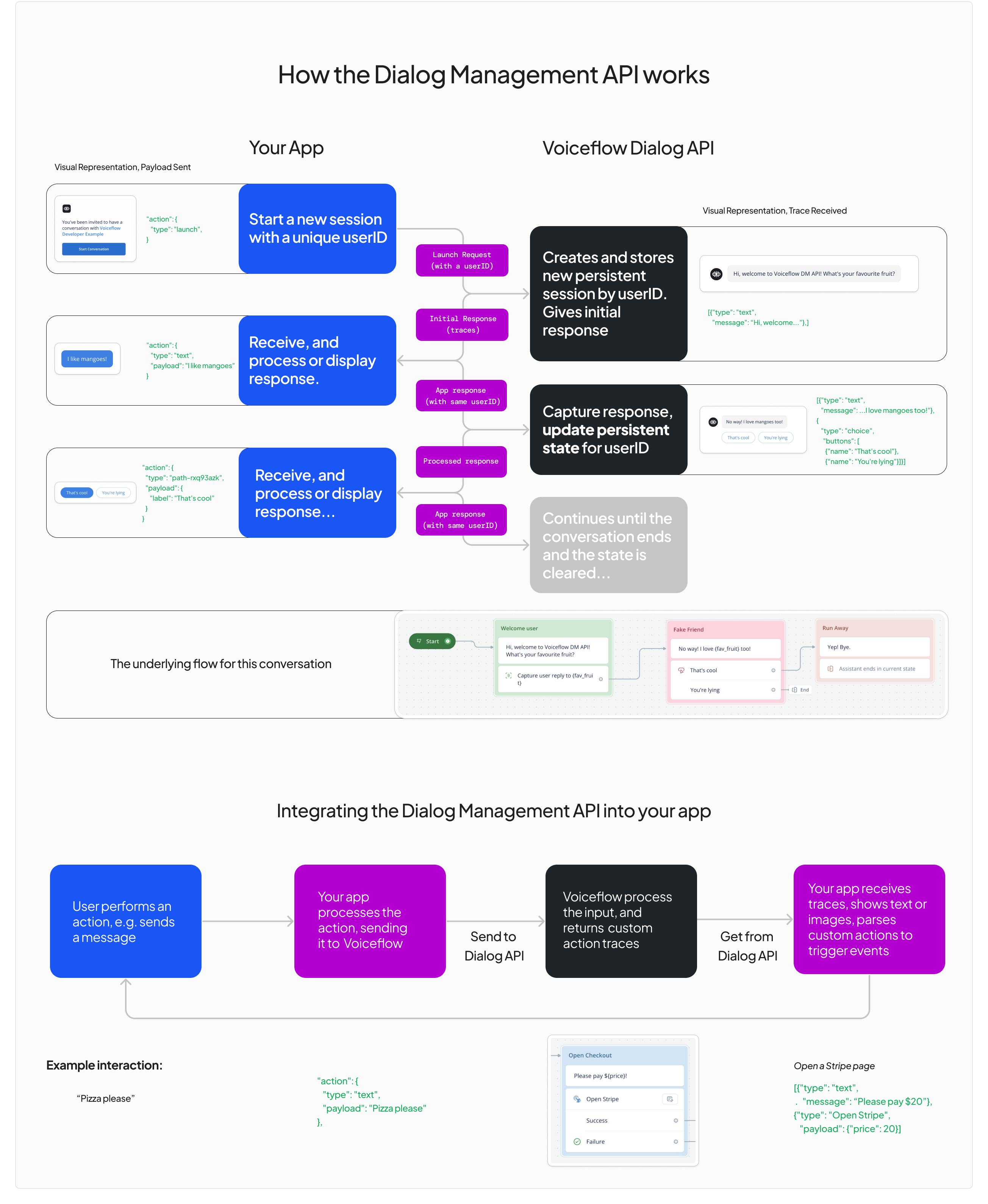The Dialog Manager API (DM API) allows any application to talk with a Voiceflow diagram using HTTP calls to the interact endpoint.
Managing your conversation state when using DM API
The DM API automatically creates and manages the conversation state. Identical requests to the DM API may produce different responses, depending on your diagram's logic and the previous request that the API received.
Note that this means the DM API is not a REST API as it does not satisfy the statelessness property. The DM API's responses depend not only on the request, but also stored state within the server. Keep this in mind while working with the DM API.

A diagram of how a conversation through the Dialog Management API works with example payloads, traces received, visual representations, and an example of how to integrate the Dialog Management API deeply into an app through a custom action.
Tracking conversation state
All endpoints take in a userID parameter, which is used to identify the caller and assign them a unique conversation state object.
Multiple conversation sessions
Multiple conversation sessions to the same Voiceflow project can be running simultaneously. Each session is identified by the userID that you specify.
For example, customer A should communicate with /state/user/customerA/interact whereas customer B should communicate with /state/user/customerB/interact.
When customer A gives a response, such as "I would like a large pizza", it will advance their specific conversation session identified by /state/user/customerA/interact. For example, the app might then ask what toppings customer A wants.
Meanwhile, /state/user/customerB/interact's session remains unchanged, e.g, it might be waiting for customer B to give their order.
Format of userID
userIDThe format of userID is up to you. You can choose any string that fits your particular domain such as user1234 or 507f191e810c19729de860ea.
There are a few best practices to defining a userID format:
-
Unique - The
userIDshould be unique to each user. Otherwise, if two users share the sameuserID, the Voiceflow app may leak information about user A's conversation to user B, which is a potential privacy violation. -
Non-sensitive - It is not recommended to use sensitive or private information in the
userIDsuch
as emails, real names, or phone numbers.
versionID
DM API endpoints also accept a versionID header whose value is a version alias that points to a particular version of your Voiceflow project.
The currently supported aliases are:
-
development- The version displayed on the Voiceflow Creator's canvas -
production- The version that has been published
Use the development alias whenever you are experimenting with your API, and the production version when integrating Voiceflow with your web app. Learn more about version and project IDs here.
Updating your version
To update the 'development' version exposed by the DM API, you must:
-
Make your changes on the canvas and NLU manager
-
Hit the blue Run button in the Voiceflow canvas to compile the diagram
-
Hit the "Train Assistant" button in the Prototype tool to train the NLU model
To update the 'production' version exposed by the DM API, you must:
-
Make your changes on the canvas and NLU manager
-
Hit the Publish button at the top-right corner of the Voiceflow canvas